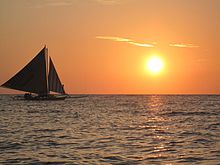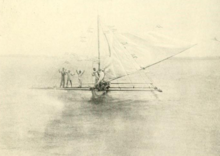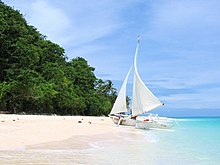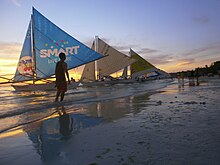Paraw
Traditionally these boats have been made from dungon, guisoc, ipil, duca, baslayan, obacya, bayog, Philippine mahogany (lawaan), basa and molave.
The main hull (excluding outriggers) is called a bangka for dugout canoes or baloto (also balangay, baroto, biroko, biray, etc.)
The two katig or outriggers usually made from bamboo or various kinds of wood and served as counterpoise so that the boat would not easily overturn.
The paraw is also equipped with a foresail or jib and adds to the overall surface area and generated thrust derived from the wind.
The mast, commonly made of bamboo, is secured by lines attached to, among other things, the outriggers, the fore (and sometimes, the aft) and various parts of the boat.
Historically, the mast of smaller paraws was a spear or bangkaw and was a useful part of the ship when conducting raids against other seaside villages.
In November 2012, a team led by the artisan Gener Paduga, along with the Tao Philippines organization, started building a full-sized paraw sailboat in Palawan.
Local sailors offer their paraws for island hopping and sunset sailing for a fairly small rental fee.






